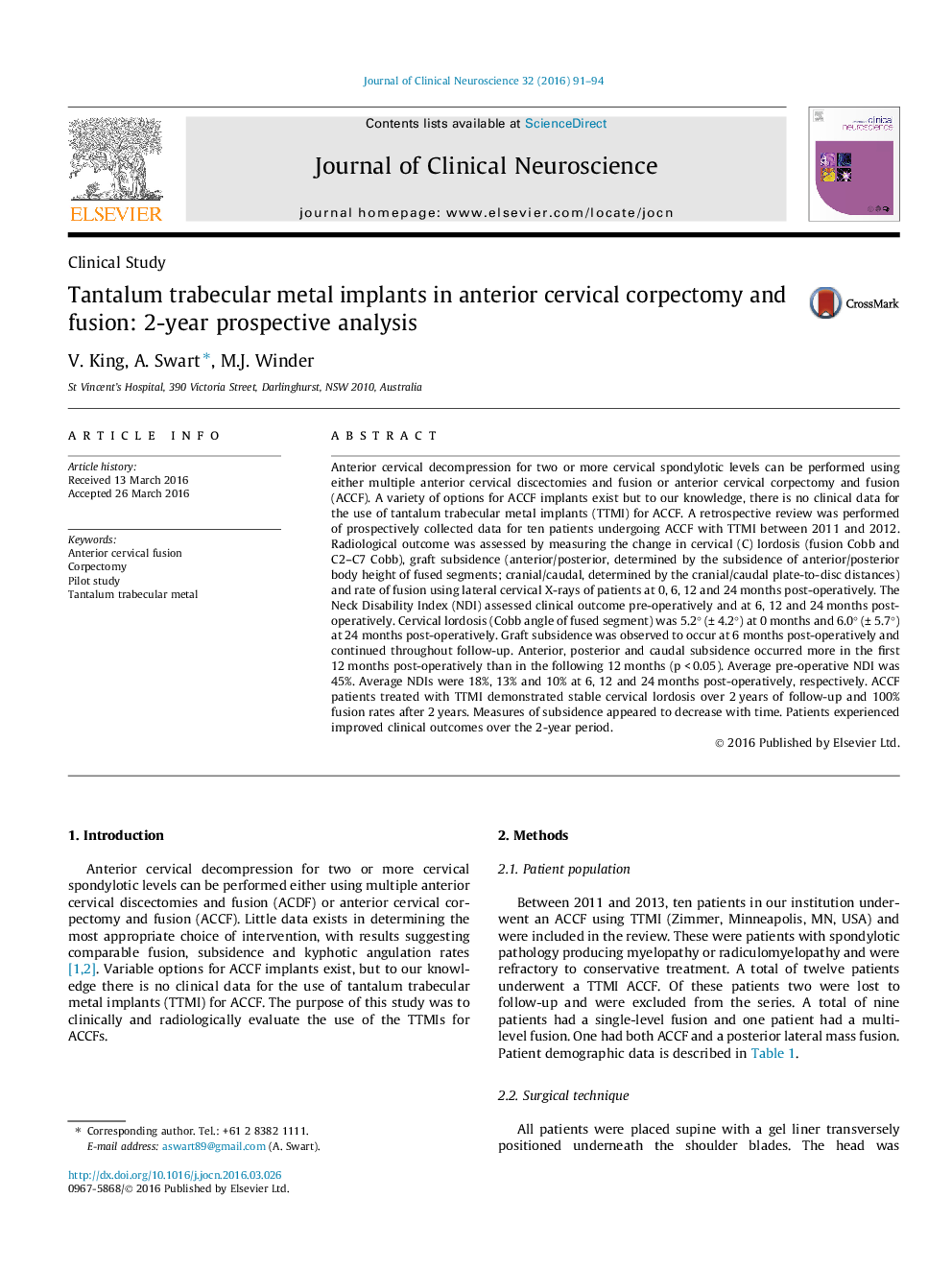| Article ID | Journal | Published Year | Pages | File Type |
|---|---|---|---|---|
| 3058050 | Journal of Clinical Neuroscience | 2016 | 4 Pages |
•First data, to our knowledge, for tantalum trabecular implants for anterior cervical corpectomy and fusion.•Patients experienced improved clinical outcomes over the follow-up period.•Tantalum demonstrated stable cervical lordosis and good fusion rates.•Tantalum is a radiologically and clinically sound alternative to conventional grafts.
Anterior cervical decompression for two or more cervical spondylotic levels can be performed using either multiple anterior cervical discectomies and fusion or anterior cervical corpectomy and fusion (ACCF). A variety of options for ACCF implants exist but to our knowledge, there is no clinical data for the use of tantalum trabecular metal implants (TTMI) for ACCF. A retrospective review was performed of prospectively collected data for ten patients undergoing ACCF with TTMI between 2011 and 2012. Radiological outcome was assessed by measuring the change in cervical (C) lordosis (fusion Cobb and C2–C7 Cobb), graft subsidence (anterior/posterior, determined by the subsidence of anterior/posterior body height of fused segments; cranial/caudal, determined by the cranial/caudal plate-to-disc distances) and rate of fusion using lateral cervical X-rays of patients at 0, 6, 12 and 24 months post-operatively. The Neck Disability Index (NDI) assessed clinical outcome pre-operatively and at 6, 12 and 24 months post-operatively. Cervical lordosis (Cobb angle of fused segment) was 5.2° (± 4.2°) at 0 months and 6.0° (± 5.7°) at 24 months post-operatively. Graft subsidence was observed to occur at 6 months post-operatively and continued throughout follow-up. Anterior, posterior and caudal subsidence occurred more in the first 12 months post-operatively than in the following 12 months (p < 0.05). Average pre-operative NDI was 45%. Average NDIs were 18%, 13% and 10% at 6, 12 and 24 months post-operatively, respectively. ACCF patients treated with TTMI demonstrated stable cervical lordosis over 2 years of follow-up and 100% fusion rates after 2 years. Measures of subsidence appeared to decrease with time. Patients experienced improved clinical outcomes over the 2-year period.
